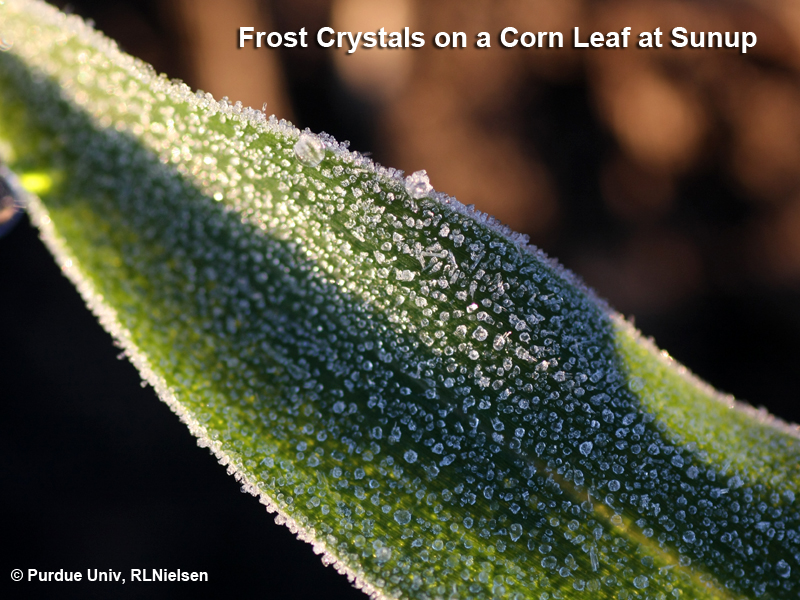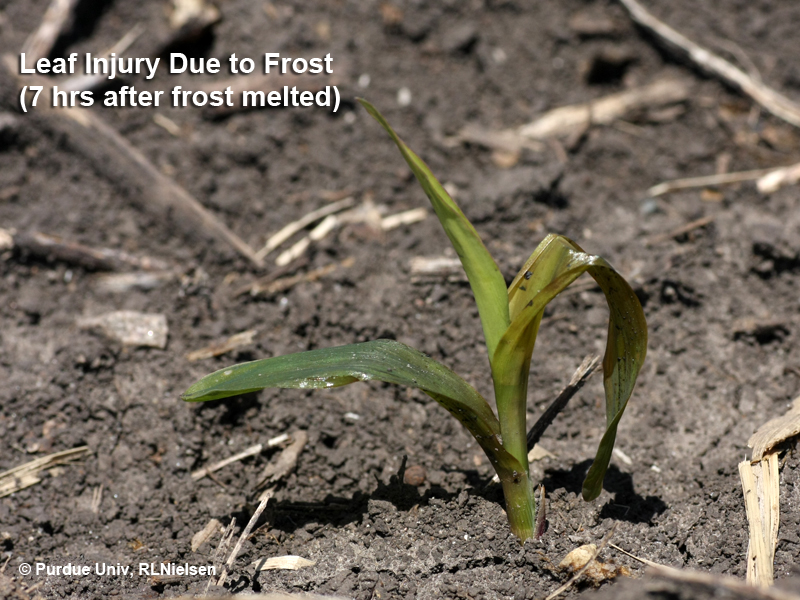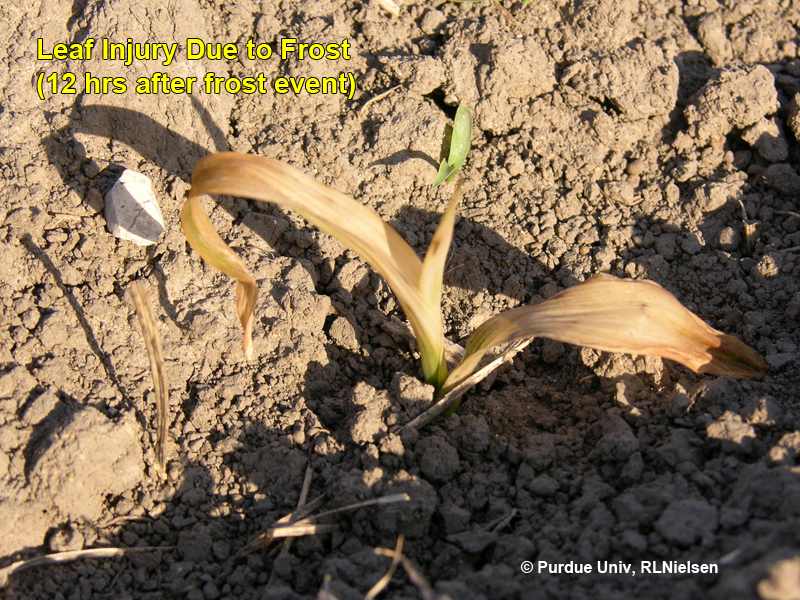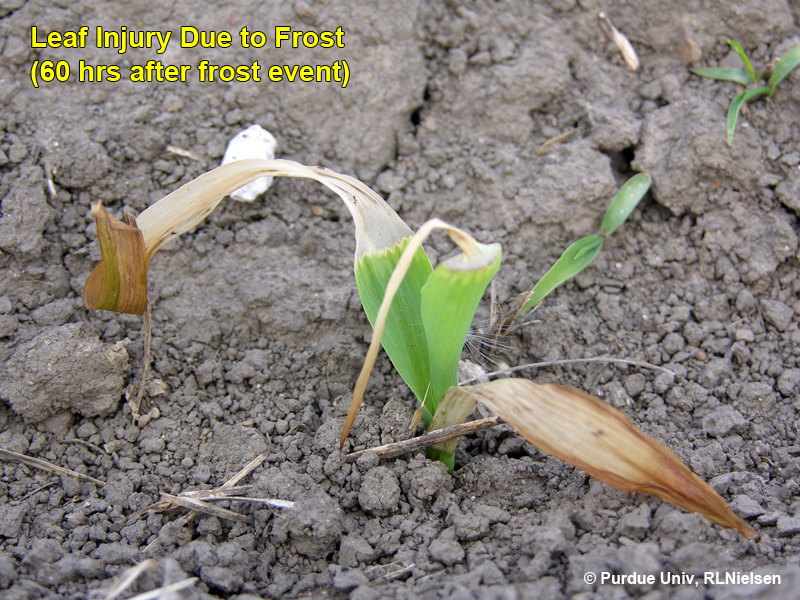Updated May 2020
URL: http://www.kingcorn.org/news/timeless/FrostedCorn.html
Assessing Frost / Cold Temperature Injury to Young Corn
R.L. (Bob) Nielsen
Agronomy Dept., Purdue Univ.
West Lafayette, IN 47907-2054
Email address: rnielsen at purdue.edu
Twitter: @PurdueCornGuy
When significant frost develops on young corn plants, it is tempting to jump to the logical conclusion that significant plant mortality will soon follow. However, frost by itself is not a guaranteed "kiss of death" for young corn plants. What is more important is whether the temperature that accompanied the frost event was lethal or not. Most agronomists agree that "lethally cold" temperatures for young corn are those that dip to 28F or lower for 1 to 2 hours.
The effect of frost on young corn when it is accompanied by temperatures no lower than about 30F is primarily damage and death of the exposed above ground leaf tissue. As long as the growing point of the young plant (aka the apical meristem) is still protected below the soil surface, the injured plant usually recovers from the effects of the superficial leaf damage.
Within 3 to 5 days of the frost event (more quickly with warm temperatures, more slowly if cool), elongation of the undamaged leaf tissue in the whorl will become evident. As long as the recovery is vigorous, subsequent stand establishment should be not be affected.
Plant appearance following damage by lethal cold temperatures (28F or lower for a couple hours) may initially be similar to that due to "simple" frost damage. The difference is that there will be no subsequent elongation or "recovery" of leaf tissue from the whorl like you would see in the days following "simple" frost damage to leaves. Inspection of the growing point area (by slicing down middle of stem, through the crown of the young plant) will eventually reveal discolored, soft or mushy tissue as a consequence of the lethal temperatures.
The bottom line for diagnosing the severity of frost or low temperature injury to corn is that you generally need to wait three to five days after the weather event before you can accurately assess the extent of damage or recovery. Injury to the crop can look very serious the day after the event or even two days after the event, but recovery is likely if there is no injury to the growing points of the affected plants.
Click images to display larger versions.
Related Reading
Nielsen, RL (Bob). 2015. Silver Leaf Symptom in Corn. Corny News Network, Purdue Extension. http://www.kingcorn.org/news/timeless/SilverLeaf.html. [URL accessed May 2020].
Nielsen, RL (Bob). 2019. Growing Points of Interest. Corny News Network, Purdue Extension. http://www.kingcorn.org/news/timeless/GrowingPoints.html. [URL accessed May 2020].
Nielsen, RL (Bob). 2020. Cold Soils & Risk of Imbibitional Chilling Injury in Corn. Corny News Network, Purdue Extension. http://www.kingcorn.org/news/timeless/ImbibitionalChilling.html. [URL accessed May 2020].
Nielsen, RL (Bob). 2020. Emergence Failure of Corn. Corny News Network, Purdue Extension. http://www.kingcorn.org/news/timeless/EmergenceFailure.html. [URL accessed May 2020].



